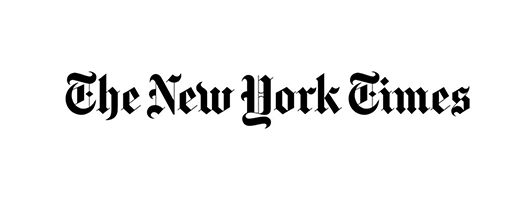News/Presse INTERNATIONAL REAL ESTATE House Hunting in ... Austria
This home, built in 2003, was designed according to the principles of feng shui, the Chinese practice of creating harmonious surroundings.
By VIRGINIA C. McGUIRE
Published: January 19, 2010

A SIX-BEDROOM THREE-AND-A-HALF-BATH CONTEMPORARY NEAR SALZBURG
890,000 EUROS ($1.3 MILLION)
his home, built in 2003, was designed according to the principles of feng shui, the Chinese practice of creating harmonious surroundings. There are open spaces and maple finishes, creating a minimalist feel. Doors throughout do not have doorknobs and open at a touch. The house is set into a hillside, and every room overlooks either the garden or the mountains.
An open kitchen has a stainless-steel hood set over a square island. Instead of a backsplash, a line of windows runs between the counter and cabinets, infusing the space with natural light. The living room has a four-meter-high (about 13-foot) ceiling and floor-to-ceiling windows. The dining room has a glass door leading to one of the property’s three outdoor eating areas. Maple floors run throughout.
On the upper floor, skylights brighten a windowless hallway that leads to the bedrooms. At the end of the hall, the master suite has a door to the garden. Its en-suite bathroom has two stainless steel sinks and slate floor tiles. Two additional bedrooms and a bathroom open off the hallway. The bottom floor has a sauna, three more bedrooms and a bath. Two of the bedrooms are being used as office space.
The home is on a hillside overlooking the village of Bergheim, a 10-minute drive from downtown Salzburg. It has a view of the Alps. The exterior is a rust-red stucco; the home sits on a quarter of an acre. It has a wood patio and a grassy backyard. Off the living room is another terrace. Beds of bamboo carry the house’s Asian aesthetic into the garden.
Salzburg has an international reputation as a musical city; the annual Salzburg Festival brings performers from all over the world each summer. A bus runs from the village of Bergheim into Salzburg, and it takes 10 minutes to get from Bergheim to the Salzburg airport by car. The nearest ski slopes are a 15-minute drive, and in the summer there is swimming and boating on the area’s lakes, which have restrictions on powerboat use. The Italian border is an hour and a half from Salzburg, and the German city of Munich is an hour away by car.
MARKET OVERVIEW
While prices in many parts of the world faltered or even plummeted in 2009, prices in many parts of Austria stayed strong, according to data gathered by WEBSERVICESunited, a Vienna-based company that provides online tools and data gathering to the real estate industry. Roland Schmid, the company’s founder and chief executive officer, said prices for apartments in urban areas went up 6 to 8 percent in 2009, and prices for single-family houses went up 4 percent. At the same time prices fell about 3 percent outside urban areas. He was citing a study done by Re/Max Austria using data gathered by his company. Austria’s market’s stability is a result of a low-risk mortgage market where most banks required 20 percent down, but Mr. Schmid said a further tightening of lending restrictions — many banks are now requiring up to 30 percent down and sometimes more — brought sales volumes down about 6 percent across the country last year.
Prices in Vienna are higher close to the city center, said Aslan Kurtaran, the chief executive officer of Expat Consulting, a real estate and relocation firm based in Vienna. In the Innere Stadt, a high-end district that includes Vienna’s old town, Mr. Kurtaran said data from the Austrian Association of Real Estate Experts had shown that apartments can fetch 10,000 or even 14,000 euros per square meter ($1,350 to $1,890 per square foot). In districts closer to the center, well-appointed apartments sell for 3,500 euros per square meter ($470 per square foot), according to Mr. Kurtaran. He says buyers seeking single-family homes must go farther from the city center — the 13th, 18th and 19th districts; there, they can expect to pay around 7,000 euros per square meter ($945 per square foot) for a high-end family house.
Salzburg’s prices for luxury apartments are slightly lower than Vienna’s, said Marlies Muhr, the listing agent for this house and the owner of Marlies Muhr Real Estate, based in Salzburg. She says homes in the oldest part of Salzburg can cost as much as 8,000 to 10,000 euros per square meter ($1,076 to $1,350 per square foot). Houses in Salzburg’s inner suburbs cost about 35 percent less than those in the city. The house featured here is priced at about 4,450 euros per square meter ($600 per square foot.) Prices in this part of Austria are at the high end, Ms. Muhr said, because the mountainous terrain limits the amount of land that can be built on.Kurtaran
WHO BUYS IN AUSTRIA
Austria’s foreign buyers come from the United States, Britain and Scandinavia, Mr. Kurtaran said. There are also buyers from Eastern Europe and from the Middle East. He said Slovakia, the Czech Republic, Poland, Ukraine and Russia were well represented, as well as the United Arab Emirates. He estimated that 65 percent of foreign buyers come to Austria for business, the rest for second homes. Vienna in particular has a large international business community, fueled in part by the United Nations presence there, Mr. Kurtaran said.
BUYING BASICS
Rules and restrictions for foreign buyers vary depending on the municipality, Mr. Kurtaran said. Many require buyers to seek approval from the city government. “If a foreigner wants to purchase only as an investment,” Mr. Kurtaran said, “he might face difficulties.” But most buyers who intend to live in Austria are approved. In Vienna, for instance, the notary handling the sale submits an application to the city government on behalf of the buyer. Mr. Kurtaran says the notary’s fee, which is typically about 2 percent of the purchase price, covers the application process, which usually takes one or two months. The approval process is shorter for citizens of another European Union country.
In total, buyers should expect to pay 10 percent on top of the sales price. Costs include a real estate agent commission, usually 3 percent; and Mr. Kurtaran says a 20 percent value-added tax is charged on the commission. The land registration fee is 1 percent of the purchase price. There is a hefty 3.5 percent transfer tax, but it is in lieu of ongoing annual property taxes, according to Ms. Muhr. Mortgage financing is available; a typical loan term is 15 to 20 years. In most cases, Ms. Muhr said, buyers who need financing put down 25 to 30 percent of the purchase price. Closing costs include 1.2 percent of the loan amount, to register the mortgage.
New York Times, 19.01.2010







